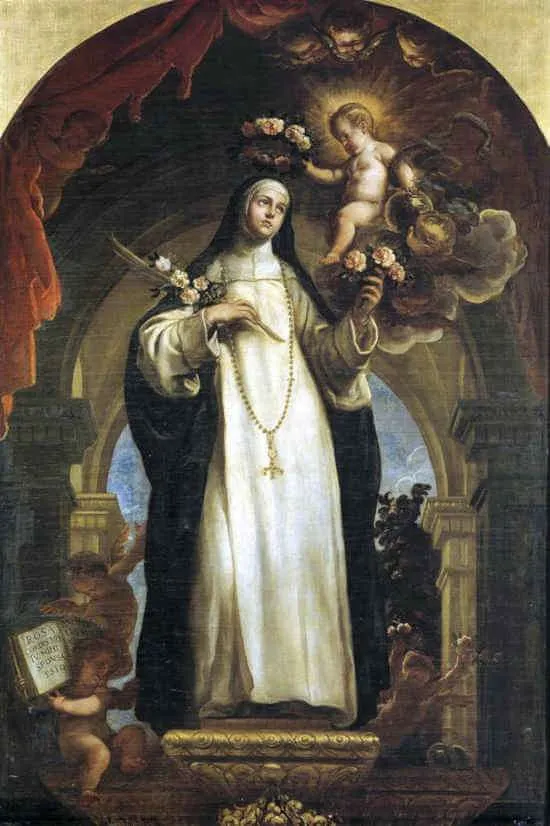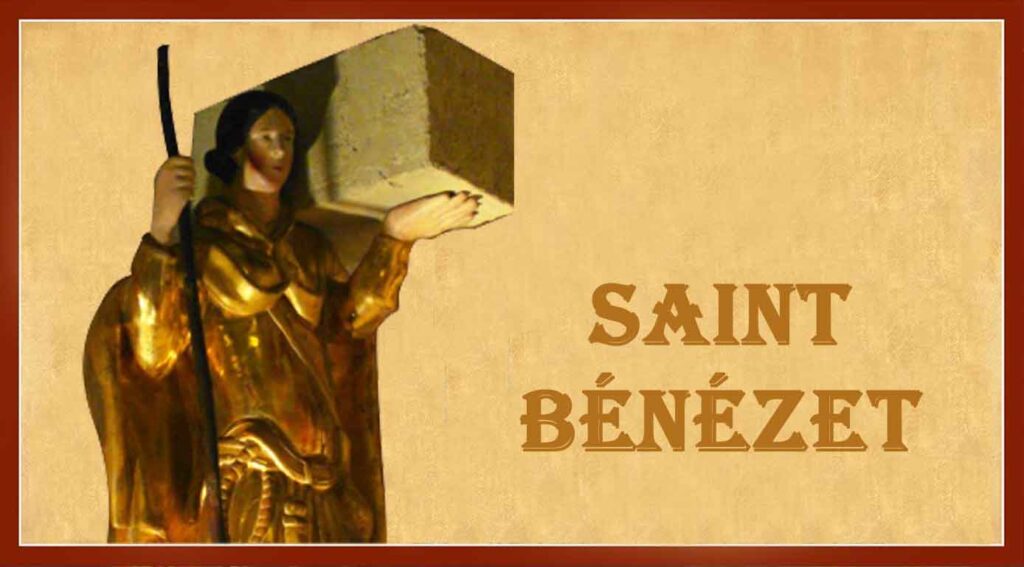1586–1617; Patron Saint of the Americas, Peru, embroiderers, florists, gardeners, needleworkers, and people ridiculed for their piety; Invoked against vanity and self-love; Canonized by Pope Clement X in 1671
In 1532, Spanish explorers arrived in modern-day Peru. They soon became covetous of the silver and gold that was plentiful in this New World. Over the next several years, missionaries from the Mercedarians, Dominicans, Franciscans, and Augustinians arrived on Spanish ships with the purpose of sharing the Gospel to the ends of the earth. The missionaries tried to temper the often-brutal Spanish conquerors. In 1537, Pope Paul III, concerned about reports of Spanish cruelty to the native peoples, issued a papal bull named Sublimis Deus in which he highlighted the intrinsic dignity of the natives, called for an end to the cruelty, and encouraged missionaries to share the Gospel in these new lands so that all could come to know and love Christ. In 1541, the pope established the Diocese of Lima and appointed its first bishop, hastening the missionaries’ efforts.
Today’s saint, Saint Rose of Lima, was born in the capital city of the newly established Viceroyalty of Peru, governed by the Kingdom of Spain, fifty-five years after the first Spanish conquerors arrived and began colonizing the territory. She was born Isabel Flores de Oliva, the seventh of eleven children. She was reportedly given the nickname “Rose” shortly after birth when one of the family servants said she saw the infant’s face transform into a rose. Her father was a Spaniard and a member of the Spanish army. Though her mother was born in Peru, at least one of her mother’s parents was a Spanish settler. Both of Isabel’s parents were devout Catholics who instilled a deep faith in their children from an early age.
As a child, Isabel manifested a deep devotion to God. She is said to have often spent long periods of prayer in the middle of the night before a shrine she set up in her room. At the age of eleven, she received the Sacrament of Confirmation and formally took the name Rose. Her confirmation was most likely administered by the diocesan bishop who was later canonized as Saint Turibius of Mogrovejo.
As Rose matured into a young woman, she was known for her physical beauty, catching the attention of many young men and their families who saw her as an ideal future spouse. However, Rose had no interest in marriage and wanted to become a nun. She was concerned that her beauty was a distraction, and even a temptation, to others. Her remedy was to cut off her beautiful hair to make herself less attractive. She also rubbed pepper on her face and lime juice on her hands to make her skin less appealing to young men. Although that may seem extreme to some, her intent was to remain pure for God and to take Jesus as her sole Spouse. Though her father refused to permit her to become a nun, after several years he acquiesced to her desire not to marry, allowing her to live in a small hut on the family property where she could be with her divine Spouse through solitude and prayer.
Her hut, or hermitage, became a place in which Rose engaged in charitable works. She brought the poor and sick into her hut, fed them, and nursed the sick back to health. She worked to support herself and her family, who were facing hardship, by selling at the local market lace and embroidery she made and flowers she grew. After learning about Saint Catherine of Siena, she sought to emulate her. She practiced severe penances, slept on a hard floor, wore a crown of thorns while alone in her room, fasted, and inflicted numerous penances upon herself every day. Eventually, she chose to abstain from meat. She quickly discovered that penances opened the door to spiritual abundance. Once she discovered that, she never turned back. She went to Mass daily and adored the Blessed Sacrament at church. When she turned twenty, because she could not become a nun, she followed in the footsteps of her role model, Saint Catherine of Siena, and became a lay member of the Third Order of Saint Dominic. She carried on her life of continuous prayer and penance, sleeping only two hours a night so she could have more time for prayer. Her self-made bed consisted of broken glass, stone, potsherds, and thorns. She wore her crown of thorns continuously, which pierced her skull, but was covered with roses to conceal the metal spikes. She wore a chain of spikes around her waist. Her fasts were extreme, her penances doubled, but life for Rose was good—very good—and she could not have been happier.
For the next eleven years, Rose lived a beautiful and hidden life. She continued her charitable works and entered deeply into union with God. Some saints do great things in the world and Church in a visible way. Some give supreme witness to their faith through martyrdom. Others enter or found religious orders, or orchestrate new movements within the Church. Rose became a saint because she entered into divine union, the seventh mansion, or what has been called ‘spiritual marriage’ with her Savior. During those eleven years of her life, she frequently had visions of Jesus, the Mother of God, and the saints, with whom she conversed and received spiritual guidance. She entered into ecstasies and raptures and experienced untold interior spiritual favors from her Lord. One of the greatest gifts she received from her divine Spouse was long periods of exceptionally painful spiritual dryness. This interior cross produced abundant good fruit as she persevered in her fidelity to her Spouse, thus deepening her divine union with Him. As her interior purifications were completed and she completely detached from selfishness, her soul was flooded with the reward of Jesus’ manifest presence. He communicated with her as His beloved.
Because of her intimate union with God, Rose was able to predict the day of her own death. Her Lord wanted her fully with Him in Heaven, so at the age of thirty-one, Jesus took her to Himself where she could live forever as one with Him. The archbishop offered her funeral Mass, and she was quickly acknowledged as a saint. Around fifty years after her birth into Heaven, she was canonized a saint on earth, the first from the Americas to receive that honor. Miraculous healings had been attributed to her intercession while she was alive, and they continued after her death. One legend states that after her death, all of Lima smelled of roses that fell from the sky.
The life of Saint Rose of Lima reveals many things to us. Penance is good, but it takes great holiness to discover this mysterious and deep truth. The “good life” is not one that is filled with worldly successes, riches, or honors, but is discovered only in an act of divine union. Furthermore, those who make the biggest difference in this world for the good are those who radically and completely give themselves over to the service of God, holding nothing back, so that God can take to Himself all that they are. As we honor this great saint of Peru, ponder her simple and hidden life. Everyone can imitate her life and virtues, even though her depth of prayer and commitment to penance can, at first, be intimidating. Try to discover the truths that she discovered, and seek to imitate her by making at least one small choice each day to live a deeper life of prayer and penance. From Heaven, you will never regret such a decision.
Source: https://mycatholic.life/saints/saints-of-the-liturgical-year/august-30st-rose-of-lima/







